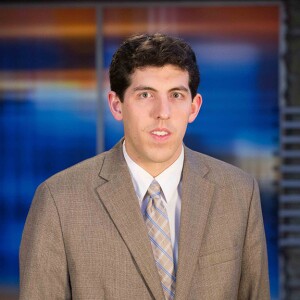HELENA — U.S. Surgeon General Jerome Adams says the country is going through a “precarious time” with COVID-19, seeing record numbers of cases, hospitalizations and deaths. However, he said there’s reason to be optimistic.
“Montana has proven that these mitigation efforts work,” he said.
Adams – one of the nation’s top-ranking public health officials and a member of President Donald Trump’s coronavirus task force – is in Montana this week, getting an update on the state’s COVID-19 situation. On Thursday, he joined Gov. Steve Bullock for a news conference at the Montana State Capitol.
Bullock said, in the last two weeks, Montana has seen a decline in the number of new positive cases and hospitalizations and in the rate of positive tests. Adams credited those improvements to people taking steps like wearing masks, maintaining social distancing and keeping gatherings small.
“We know more than we ever have before about this virus, and we know statistically that your efforts are working to slow the spread,” he said.
However, Adams expressed concern that many Montana hospitals still remain close to their maximum capacity.
“That means, if you aren’t scared of the virus, you still may not be able to get a hospital bed if you have a heart attack, if you’re in labor, if you get into a car accident, because there may not be a bed available,” he said.
He also noted tribal communities have been hit particularly hard by the virus, with Native Americans seeing a disproportionate number of COVID cases and deaths.
“It shows how this virus has preyed on people who have not just preexisting medical conditions, but preexisting social conditions that conspire to reduce our resilience, our opportunity and our health,” said Adams.
Adams acknowledged some people have questions about the health guidance they hear, and he admitted public health leaders could have done a better job of communicating why their advice changed throughout the year as they learned more about the virus.
For example, Adams said federal authorities initially didn’t recommend everyone wear masks because it wasn’t clear how many people were transmitting the virus without showing symptoms. He said data now clearly shows that half of the coronavirus’s spread comes through asymptomatic transmission and that most masks block the majority of the droplets that carry the coronavirus.
“Even if you don’t feel personally at risk for the virus, there are important reasons for you to wear a mask – and one them is that, by wearing one voluntarily, you will shorten the amount of time that schools are closed, that businesses are closed, that restaurants are closed, and you will hasten the time that it takes for us to get back to a greater sense of normal,” Adams said.
Adams also encouraged people to feel comfortable receiving a COVID-19 vaccination once it is approved.
“The average vaccine trial has about 5,000 people in it,” he said. “These trials have had 30,000 to 60,000 people enrolled in them, and we have over six candidates. That means we will have more data on the safety of these vaccines at the point of administering them to people than we’ve had for any other vaccine in history.”
The first two vaccine candidates expected to be available are from Pfizer and Moderna. Both companies say their initial results showed them to be around 90% effective. Adams said that far exceeded the federal government’s goal of 50% to 60% effectiveness.
“We truly have the capability to drive this virus into the ground once we start getting people vaccinated,” he said. “But even though you know the cavalry is coming, that doesn’t mean you just open up the gates and lay down and let the enemy attack you. That means you have to keep your guard up, you have to keep defending the fort until the cavalry arrives. We need you to continue to do your part.”
The state of Montana expects to get its first shipment of 9,750 Pfizer vaccines next week, assuming it receives federal approval. They could receive thousands more of the Pfizer and Moderna vaccines a week after.
Bullock said they hope to have 60,000 people get their first doses of the vaccine by the end of 2020. The state plans to give them first to health care workers at 10 large hospitals, then to frontline workers in rural areas and those working and living in nursing facilities.
Adams said some mitigation efforts will still be needed, even after people start getting vaccinated. However, he said he’s hopeful life could begin getting back to normal by the summer of 2021.
“If we can get everyone vaccinated, then we can put this pandemic behind us,” he said. “So we need you to hang on and do this just a little bit longer.”
Bullock said the state has brought in 284 health care workers from outside Montana to assist hospitals – particularly those who have staff members on quarantine due to COVID.




